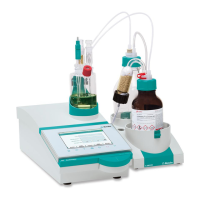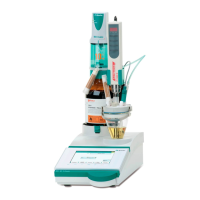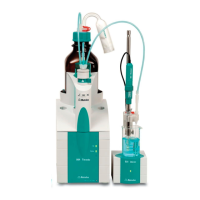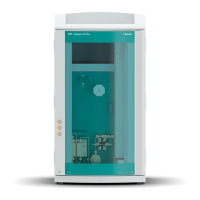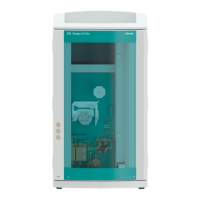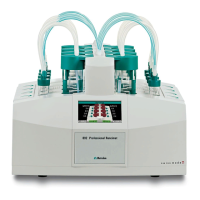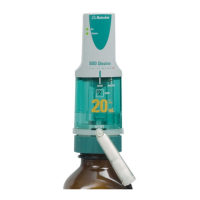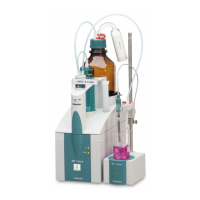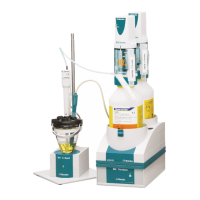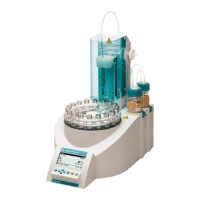5.1 Coulometric water content determination according to Karl Fischer (KFC)
■■■■■■■■■■■■■■■■■■■■■■
28
■■■■■■■■
917 Coulometer
5 Titrations
5.1 Coulometric water content determination according
to Karl Fischer (KFC)
The coulometric Karl Fischer titration is a variation of the classic water
content determination method according to Karl Fischer.
The conventional method works with a methanolic solution of iodine, sul-
fur dioxide and a base as buffer substance. When titrating a sample con-
taining water several reactions take place, which can be summarized by
the following equation:
H
2
O + I
2
+ [RNH]SO
3
CH
3
+ 2 RN <=> [RNH]SO
4
CH
3
+ 2 [RNH]I
According to the equation above, the I
2
reacts quantitatively with H
2
O.
This chemical relation is the base for the water content determination.
With the coulometric Karl Fischer titration, the necessary iodine is directly
and electrochemically generated in the submitted electrolyte ("electronic
buret"). Between the amount of electric charge and the amount of gener-
ated iodine, there is a strictly quantitative relationship, which is used for
high-precision dosing of the iodine. No titer needs to be determined as
the coulometric Karl Fischer method is an absolute determination. It must
only be ensured that the reaction generating the iodine runs with a 100%
current efficiency. This is the case with all the reagents available at pres-
ent.
The endpoint indication is effected voltametrically by modulating an alter-
nating current of constant strength to a double Pt electrode. This produ-
ces a voltage difference between the Pt wires, which significantly declines
when lowest amounts of free iodine are present. This circumstance is used
for detecting the endpoint of the titration.
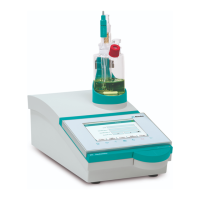
